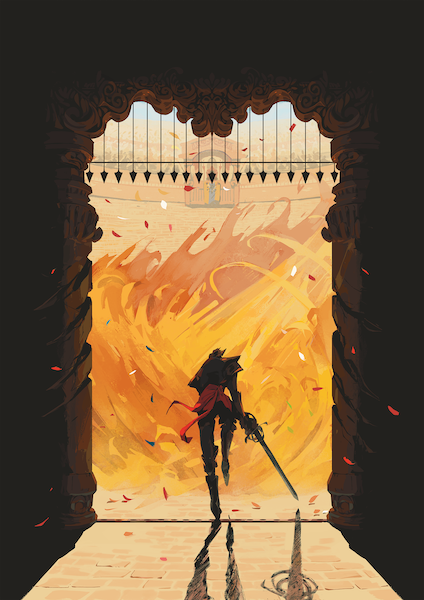'Champion of the Rose' may be the upcoming queer Filipino fantasy comic of your dreams
After the onscreen adaptation of Trese, Filipinos are taking to the local komik scene to find more hidden gems.
With a storyline including queer characters, anti-imperialism, feminist messages, and blood magic (all of which are intertwined with Philippine history), Champion of the Rose is definitely worth checking out.
The YA fantasy graphic novel has already garnered more than 5,000 views from Penlab, attracted attention on Twitter, and was featured at the world’s #1 animation festival, though only its preview has been released to the public.
The story centers around Rey, a transgender swordsman, and Rosa, the princess of the Empire of Sagrada. Together, they strike a deal to fulfill each other’s desires: if Rey participates in the King’s deadly tournament to win Rosa her own hand, then Rosa will do everything in her power to bring Rey back to his home.
In an interview with PhilStar Life, the graphic novel’s writer, Cat Aquino, and illustrator, Dominique Duran, gave an inside look on the process and influences behind Champion of the Rose.

The comic draws elements from colonial Philippine history, Jose Rizal’s novels, Catholic imagery, and even shonen anime. Aquino started working on the story in 2011, but helped develop it with Duran.
“It’s been a long process between trying to gather what I know from our research, put it together with experiences from Catholicism, and integrating it into the story,” Duran said.
The first few panels of the prologue, which depicts an ominous statue of The Dying God, show how intertwined the story is with religion.
As she got older, came out as pansexual during her university years, and studied anti-colonial theory, she sought to change her story.
Aquino explained that the Dying God is an exploration of Golden Age Spanish Catholicism, a tool to control the natives in the past, which eventually evolved into the Philippines’ predominant religion.
But the story was not always this way as Aquino had initially written the story with Disney movies, Game of Thrones, and The Hunger Games in mind—meaning, it centered on straight white characters.
As Aquino got older, came out as pansexual during her university years, and studied anti-colonial theory, she sought to change her story.
“I realized my whole world was shaped by Western literature. So, being more exposed to third world literature and Philippine literature really got me thinking,” she said. “If I'm going to be a writer, I might as well write about where I’m coming from, instead of where other people are coming from.”
Drawing from her own experiences as a queer Filipino and her advocacies allowed the story and characters to develop throughout the years.
“In my art, I don’t want to just create pretty things, I want to be able to express how I feel about the world. [...] Many of us queer non-white authors were raised on Western stories and have had to let go of the idea that we had to make stories like that.”
For Aquino, her goal was to communicate that anyone can make “super weird stories like this and still get them out into the world.”

Duran hopes for Champion of the Rose to push other Filipino creatives to write about Philippine culture without shame.
“I just want to encourage people to make something that’s unabashedly Filipino,” she said.



